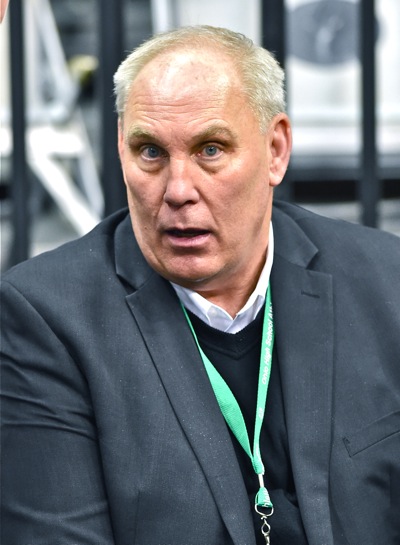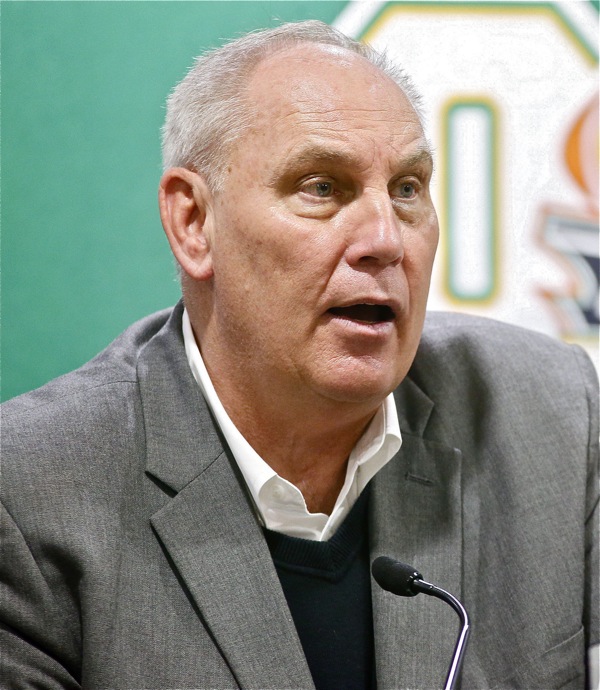Will we, or won’t we? That’s the prevailing question in the minds of coaches, administrators, parents and athletes relative to the question – will there be fall sports come August?
 “How are you going to cover fall sports this year?” said one Miami County school superintendent to me last week.
“How are you going to cover fall sports this year?” said one Miami County school superintendent to me last week.
“You’re assuming that there’ll be fall sports?” I asked back.
He just smiled.
“Nothing official,” he admitted. “But if I were a betting man…”
And he didn’t finish.
 But if he was…the odds are enticing, while any decision to play is apt to come under incredible scrutiny, and a decision one way or the other…divisive!
But if he was…the odds are enticing, while any decision to play is apt to come under incredible scrutiny, and a decision one way or the other…divisive!
But people do want to know. Their patience has grown thin, weary from the negative overtones of headlines and two schools of thought based on fact. One, 99% of the population has been unaffected by the Covid virus. Two, the death rate, nationally, is approaching 100,000. And yet…indecision across the board. How do families prepare? Do they plan their summer around sports, working out, camps, and travel baseball? Or do they take that vacation that’s never been possible because of the kids are immersed in sports?
Three, people need to know, if there is sports – questions and uncertainty about testing, crowds, distancing, sanitation…and athletes sweating and pawing at each other. Should we play…if we could? Mitigated risk, given 99% are unaffected? Or, do we continue to wait things out, based on the example of 100,000?
The fact is…you’re not going to be able to flip a switch in August…to suddenly play football come August 28. And if you’re one that’s always assumed that it’s automatic come the last Friday in August, you’re naive – unnecessarily innocent! The rumors, spawned by the governor’s words, press conferences, and frustration with Amy Acton (Director of Health, Ohio Dept. of Heath) fuel the fire. But unsubstantiated debate is no help, only adding to the frustration and confusion.
Can one prepare? And is there even a betting man’s instinct?
We called OHSAA Executive Director Jerry Snodgrass Friday, and in the middle of a manic schedule the former teacher, coach, and athletic director from Findlay High School confessed that, like everyone else…he can’t prepare either.

“There’s no one to blame. It’s just the coronavirus and what science tells us to do in order to be safe.”
“I can’t tell you,” he said by phone, after a long pause. “I don’t even have an instinct, because we have to rely on the recommendations of a governing body (the Governor and the Director of Health). We take our cue from both of them. People have this misconception that I can just institute fall sports, winter sports, and spring sports arbitrarily because of my leadership role. But I don’t have the ability to do that. People don’t have to agree with it, but that’s the way it is.
“I don’t even have an instinct, regarding 30, 60, or 90 days from now. I don’t think anyone does. Yesterday’s announcement by the Governor…I didn’t expect that, even an hour before he did it. So from our perspective, we just have to plan for everything.”
If there are no fall sports, no football, there are growing concerns among coaches that a year’s absence will have a devastating impact on individual programs at schools struggling to maintain requisite roster numbers. One expressed this week that “If we don’t play it may cost be a third of my roster. You lose the seniors, of course, and the underclassmen that are likely starters would come back. But the fringe players and the last ten on the bench that don’t see playing time are likely to find jobs and different activities. Football is a year-round commitment, and if there’s no reward……”
“All of those scenarios enter in,” admits Snodgrass. “We’re aware of them. But what’s that mean to us? We still can’t act contrary to the Governor’s decision and the Department of Health because of that possibility. And that’s not what any of these decisions were based on in the first place. There’s all kinds of fallout possible with this situation. And, there’s a lot of people out there looking for scapegoats…someone to blame. People have told me I killed more people by cancelling spring sports than the virus did. That goes with the territory, don’t get me wrong. But it’s disheartening to think of looking for someone to blame. No one’s to blame. It’s just the coronavirus and what science tells us to do in order to be safe.”

“It (fall sports) boils down to three things. Facilities have to be opened, building have to be opened, and what are the guidelines regarding social distancing. Those will be the determining factors.”
Still, Snodgrass is a man of the ranks. Former teacher, coach, and athletic director, he has a keen instinct for the value of competition and its value to the process of adolescent development. Like others who are frustrated, he, too, understands – laments – as time ticks away from those denied the opportunity to play while they can, and the experiences forever missed as a result.
“But it’s not a matter of indecision,” assures Snodgrass. “I’m no scientist, but people in those roles are. So, we’re left with picking up the pieces and trying to plan with every possible thing we know. I understand the impatience and the frustration. I appreciate the differences in opinion. But I hope people don’t blame, because the other good side is that people learn to deal with it.”
Still, are there any tangibles about which a return to play can be based? Please, Jerry…give us a sign. Throw us a bone.
“Well,” he concluded. “It comes down to three things. One, it will depend upon school facilities being opened up. We don’t control that. Two, it will depend upon the school buildings being opened, because that has to do with locker rooms and other stuff in many cases. And three, it will depend on what the guidelines are – if social distancing is required from players and officials. If it is there’s no way you can do it. As I see it, those three things will be the determining factors.”

"People have this misconception that I can just institute fall sports, winter sports, and spring sports arbitrarily because of my leadership role. But I don't have the ability to do that." - OHSAA Exec. Director Jerry Snodgrass (Press Pros File Photos)


